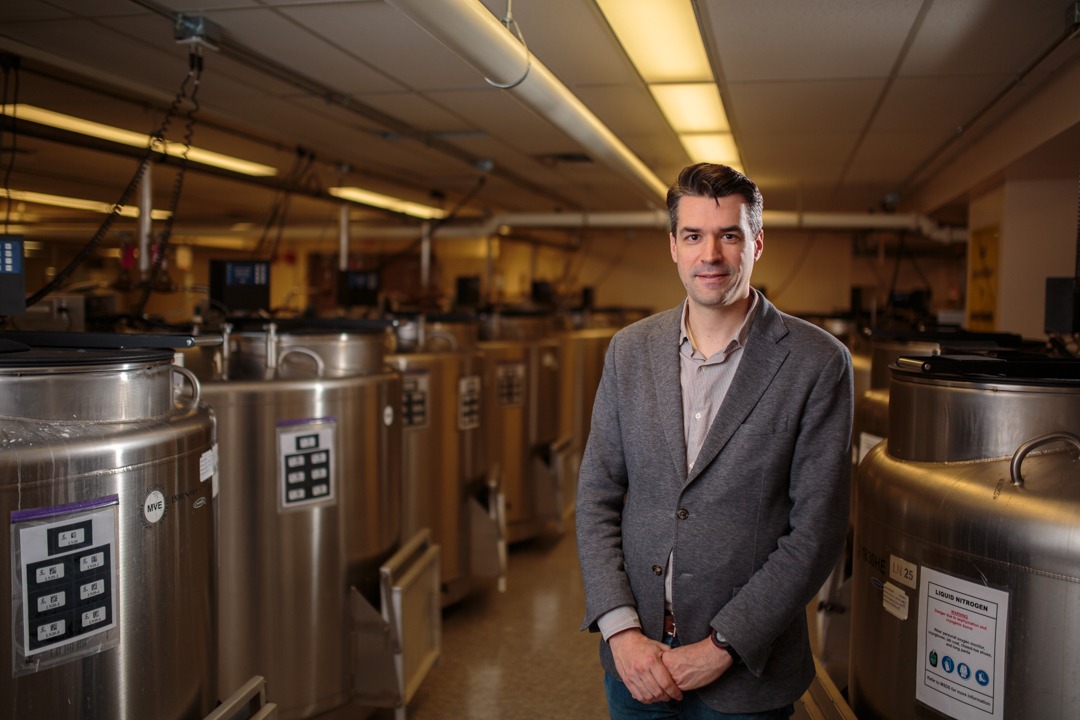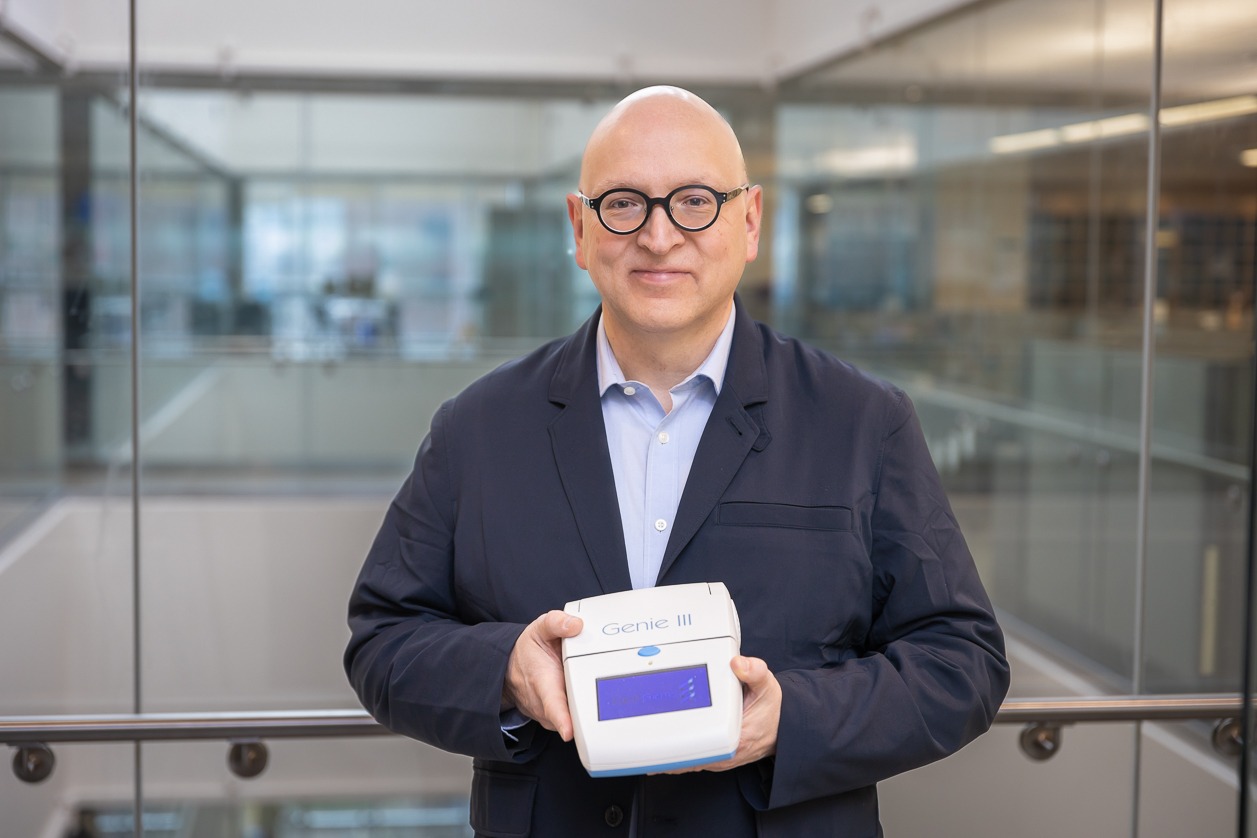
Made-in-Hamilton app speeds up lifesaving treatment for heart attack patients

Dr. Hassan Mir, co-founder of Sayhut Inc.
The Ontario Centre of Innovation recently announced $500,000 in provincial funding to expand a made-in-Hamilton smartphone application into the Ottawa region. Funding is aimed at fast-tracking digital health innovations in Ontario.
The Hamilton-born SMART AMI app by Sayhut Inc. streamlines how hospital emergency department doctors share electrocardiogram (ECG) images with on-call interventional cardiologists at regional cardiac centres for real-time review and decision making. The app has the potential to expand to hospital systems provincially, nationally and internationally. This funding is part of an $8.2 million investment of 13 approved projects designed to revolutionize health-care delivery across the province.
APP-reciation for innovation
It was mid-October when Burlington resident Paul Cropper awoke in the middle of the night with abdominal pain, and then noticed other alarming symptoms. “I was sweating. I felt nauseated and my chest was feeling tight,” recalls the 81-year-old man.

Using the SMART AMI app, an interventional cardiologist reviews an electrocardiogram image sent by an emergency department doctor from another hospital.
Based on Cropper’s ECG images, the emergency department doctor at Burlington’s Joseph Brant Hospital suspected he was experiencing a potentially deadly type of heart attack called a STEMI (ST-Elevation Myocardial Infarction), where the coronary artery is completely blocked.
In order to confirm the diagnosis, and plan next steps, the emergency department doctor used an innovative new made-in-Hamilton smartphone app to instantly and securely share Cropper’s ECG images with the on-call interventional cardiologist at Hamilton Health Sciences (HHS) Hamilton General Hospital (HGH), the regional cardiac centre for south-central Ontario.
The cardiologist was able to quickly confirm a STEMI, and Cropper was rushed by ambulance to HGH where the region’s cardiac catheterization lab is located, for emergency angioplasty to open the blocked artery.
“Everything happened really smoothly and efficiently,” says Cropper, who has since recovered and is back home. “The paramedics were very thorough and caring, and the catheterization lab team at Hamilton General Hospital was ready for me as soon as I arrived.”
SMART AMI app by Sayhut Inc.

Dr. Ted Scott, HHS vice president of innovation and partnerships.
The SMART AMI app has been used in two Hamilton-based trials over the past four years. This fast, secure, easy-to-use and privacy-compliant smartphone app allows for real-time ECG review and decision making for STEMI patients. The app also helps improve hospital efficiency by ensuring that only those patients needing emergency angioplasty treatment are brought to the catheterization lab.
“The success of the SMART AMI app underscores the vital role clinicians play in turning ideas to innovation driving better health outcomes in our community and beyond,” says Dr. Ted Scott, vice president of innovation and partnerships for HHS.
Innovative thinking
The app is the brainchild of Dr. Hassan Mir and Dr. Talha Syed, who came up with the idea when they were resident doctors at McMaster University from 2015 to 2018, with placements at HGH’s cardiology department.
Mir is now an academic cardiologist, clinician investigator, and assistant professor at the University of Ottawa Heart Institute. He is also co-founder of Sayhut Inc., the mobile health start-up company he established to develop the SMART AMI app. The company has since branched out to develop other smartphone health-care apps aimed at improving access, efficiency, and patient outcomes.
Syed leads a large and diverse cardiology practice at Oakville Trafalgar Memorial Hospital, and remains involved with the app project through ongoing consulting.
Recognizing potential for improvements
Across Ontario and Canada, fax machines or hospital-based e-mail are still considered standard way for emergency department doctors and on-call interventional cardiologists to share ECG images because they’re secure and protect patient privacy. Using faxes or e-mail to communicate is inefficient for rapid point-of-care decision-making when time is of the essence, yet they remain the norm at most Canadian hospitals, says Mir.
Canadian guidelines say that once a STEMI patient arrives at a hospital emergency department, they need to be diagnosed and receive treatment at a regional catheterization lab within two hours, where appropriate, for the best chance of survival and to avoid major adverse cardiac events.
“These patients needed to be diagnosed as fast as possible and transferred to a catheterization lab if needed, but this wasn’t happening as efficiently as it could because we were using outdated technology,” says Mir.
Time is of the essence
Mir and Syed felt that a secure, privacy-compliant, point-of-care tool would be a game-changer for hospitals and STEMI patients, so over the subsequent years during their off-hours, they developed the SMART AMI app. “It was something we did on our own time, after work and on weekends,” says Mir. “It became a passion project.”

Dr. Madhu Natarajan, HHS interventional cardiologist
The SMART AMI app has been used by HGH and the region’s emergency departments since 2020 as part of two pilot projects led by Mir and Dr. Madhu Natarajan, an interventional cardiologist at HGH. It has shown to speed up communication and get STEMI patients to HGH’s catheterization lab faster.
The first trial, from 2020 to 2022, allowed Niagara area emergency department doctors to send ECG images to HGH on-call interventional cardiologists using the app. Based on that trial’s success, a grant was secured from the Hamilton Academic Health Sciences Organization for a two-year trial launched in 2022 to implement the app at the 14 hospitals in the region that send their STEMI patients to HGH.
The HHS-based Centre for Evidence Based Implementation trained the region’s more than 350 emergency doctors to use the app and supported the app during the evaluation process. When the trial ends in the spring of 2024, the smartphone app is expected to remain at HGH as a leading-edge communications tool. There is also hope that the program can be expanded to help with communication between paramedics and interventional cardiologists when a STEMI patient is identified on an ECG done by the paramedics in the patient’s home. Currently, only verbal rather than visual communication is used.
“Every single emergency department doctor in our region that refers STEMI patients to HGH has access to this app,” says Natarajan, who considers it an excellent tool. Natarajan is also the provincial task group chair for STEMI at the Ontario Health cardiac services team. “This has been about more than just building the technology of the app. Quick recognition is key, so patients can receive the most appropriate care. We’ve been able to navigate the many challenges in implementing such a tool across a complex health-care system to help with rapid communication between different health-care providers in helping patient management.”

Dr. Alim Pardhan, site lead, HGH emergency department.
The app’s many supporters also include Dr. Alim Pardhan, site lead at HGH’s emergency department.
“It definitely helps emergency department doctors reach interventional cardiologists more efficiently,” he says. “That’s especially helpful for emergency department doctors working in regional hospitals. It totally speeds things up in terms of getting the patient to where they need to be, faster and more efficiently. It has certainly been a very helpful tool.”



